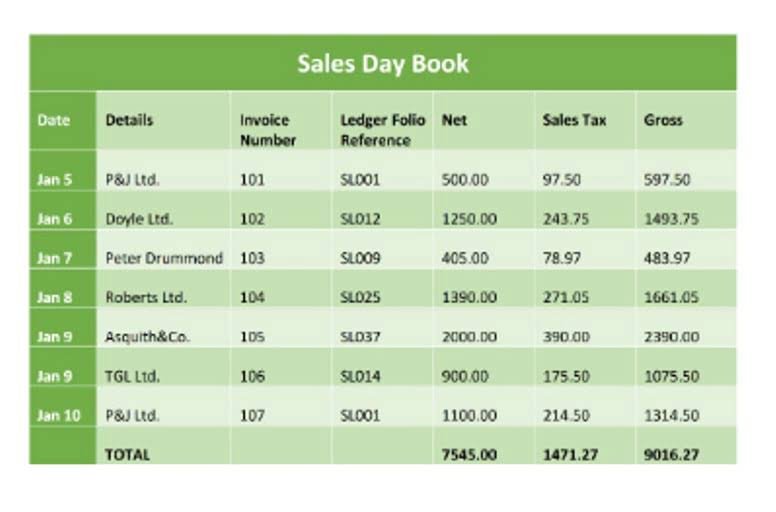
If a supplier sold merchandise to a company on credit, the supplier is a creditor. To see a more comprehensive example, we suggest an Internet search for publicly-traded corporation’s Form 10-K. Although the 2-for-1 stock split is typical, directors may authorize other stock split ratios, such as a 3-for-2 stock split or a 4-for-1 stock split. For information pertaining to the registration status of 11 Financial, please contact the state securities regulators for those states in which 11 Financial maintains a registration filing.
- Movement or changes in the capital structure and value is captured in the Stockholders’ equity statement.
- This financial statement is needed because many investors and financial analysts believe that “cash is king” and cash amounts are required for various analyses.
- Since the cash received is favorable for the corporation’s cash balance, the amounts received will be reported as positive amounts on the SCF.
- The officers of a corporation are appointed by the corporation’s board of directors to carry out (or execute) the policies established by the board of directors.
How to Prepare a Statement of Stockholders’ Equity?

The positive net income reported on the income statement also causes an increase in the corporation’s retained earnings (a component of stockholders’ equity). A negative net income (a net loss) will cause a decrease in retained earnings. This provides a link between a corporation’s income statement and its balance sheet. The statement of shareholders’ equity gives investors a much better understanding of how the individual equity accounts have changed during the period. Let’s look at the stockholders’ equity section of a balance sheet for a corporation that has issued only common stock.
Do you already work with a financial advisor?

Because there are 10% more shares outstanding, each share should drop in value. Perhaps a corporation does not want to part with its cash, but wants to give something to its stockholders. If the board of directors approves a 10% stock dividend, each stockholder will get an additional share of stock for each 10 shares held.
Dividends
The book value of an asset is the amount of cost in its asset account less the accumulated depreciation applicable to the asset. The book value of a company is the amount of owner’s or stockholders’ contra asset account equity. The book value of bonds payable is the combination of the accounts Bonds Payable and Discount on Bonds Payable or the combination of Bonds Payable and Premium on Bonds Payable.

Advance Your Accounting and Bookkeeping Career
Practically, a corporation must also have a cash balance large enough to pay the dividend and still meet upcoming needs, such as asset growth and payments on existing liabilities. Recall that the corporation’s cost to purchase those shares at an earlier date was $20 per share. The $20 per share times 30 shares equals the $600 that was credited above to Treasury Stock. This leaves a debit balance in the account Treasury Stock of $1,400 (70 shares at $20 each). As for prospective investors, this statement fundamentally serves as an indicator of a company’s net value, helping decipher its attractiveness and viability for investment.
Which of these is most important for your financial advisor to have?

The corporation will go about its routine business operations without even noticing that there were some changes among its stockholders. In essence, watching the trend in shareholders statement of stockholders equity equity, return on equity ratio, and cost of equity gives an initial understanding of a company’s financial position and efficiency. It’s crucial to dig deeper and combine these insights with additional financial statement analysis for a more comprehensive picture. However, it’s a crucial tool for helping business owners evaluate potential investments and measure their business’s performance and worth.
- Retained earnings are a company’s net income from operations and other business activities retained by the company as additional equity capital.
- In other words, since the corporation is the same before and after the stock dividend, the total market value of the corporation remains the same.
- Statement of stockholders’ equity is a statement showing the movement of all components of the equity.
- A separate line within stockholders’ equity that reports the corporation’s cumulative income that has not been reported as part of net income on the corporation’s income statement.
- A calendar year corporation will have quarterly accounting periods that end on March 31, June 30, September 30, and December 31.
- The negative amount may lead to the question “Was there a decline in the demand for the corporation’s products?
- It also means that expenses and liabilities will be reported on the financial statements when they occur (as opposed to reporting expenses when the corporation remits payment).
- The amount of paid-in capital that a company has is directly related to the total stockholders’ equity that it displays.
- All the retained earnings either current or past, will be the part of total stockholders ‘equity and it will be added in the statement of stockholders’ equity.
- The statement, which reveals changes in equity over a specified period, gives stakeholders a clear look at how equity is being managed.
- If the net realizable value of the inventory is less than the actual cost of the inventory, it is often necessary to reduce the inventory amount.
- It represents the net assets held by the owners or shareholders of the company.
- Stockholders’ equity is to a corporation what owner’s equity is to a sole proprietorship.
Note that the company had several equity transactions during the year, and the retained earnings column corresponds to a statement of retained earnings. Companies may expand this presentation to include comparative data for multiple years. Under international reporting guidelines, the preceding statement is sometimes replaced by a statement of recognized income and expense that includes additional Bookkeeping for Veterinarians adjustments for allowed asset revaluations (“surpluses”). This format is usually supplemented by additional explanatory notes about changes in other equity accounts. Except, we see paid-in capital in excess of par actually increased a bit in 2019 as a result of issuance of new shares. In Note 6 to the financial statements on page 56, we see there were in fact four million shares (rounded) issued to employees as part of their non-cash compensation.


